Colorado is a state that’s as diverse in its landscapes as it is in its wildlife.
From soaring mountains to sweeping plains, Colorado is home to a wide variety of bird species that can be spotted throughout the year.
Whether you’re an avid bird watcher or simply enjoy observing nature’s beauty, you’ll find plenty of feathered friends to admire in Colorado.
In this article, we’ll take a closer look at the 24 most common birds in Colorado and explore their unique characteristics, behaviors, and habitats.
So, grab your binoculars and get ready to discover the fascinating world of Colorado’s avian inhabitants!
| Image | Bird | Features | Price |
|---|---|---|---|
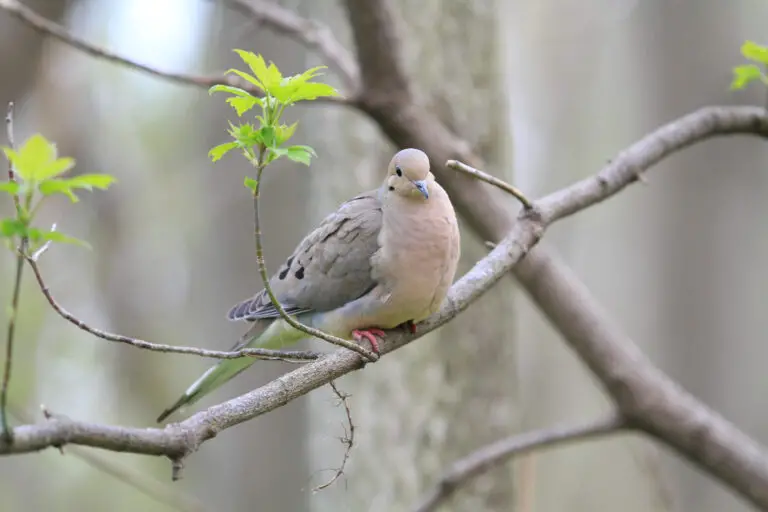 |
| 9.7 | Check Price |
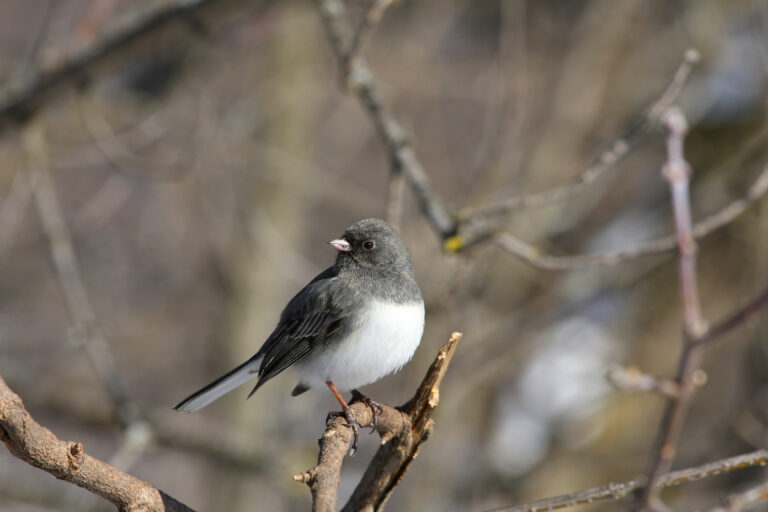 |
| 9.5 | Check Price |
 |
| 9.1 | Check Price |
 |
| 8.8 | Check Price |
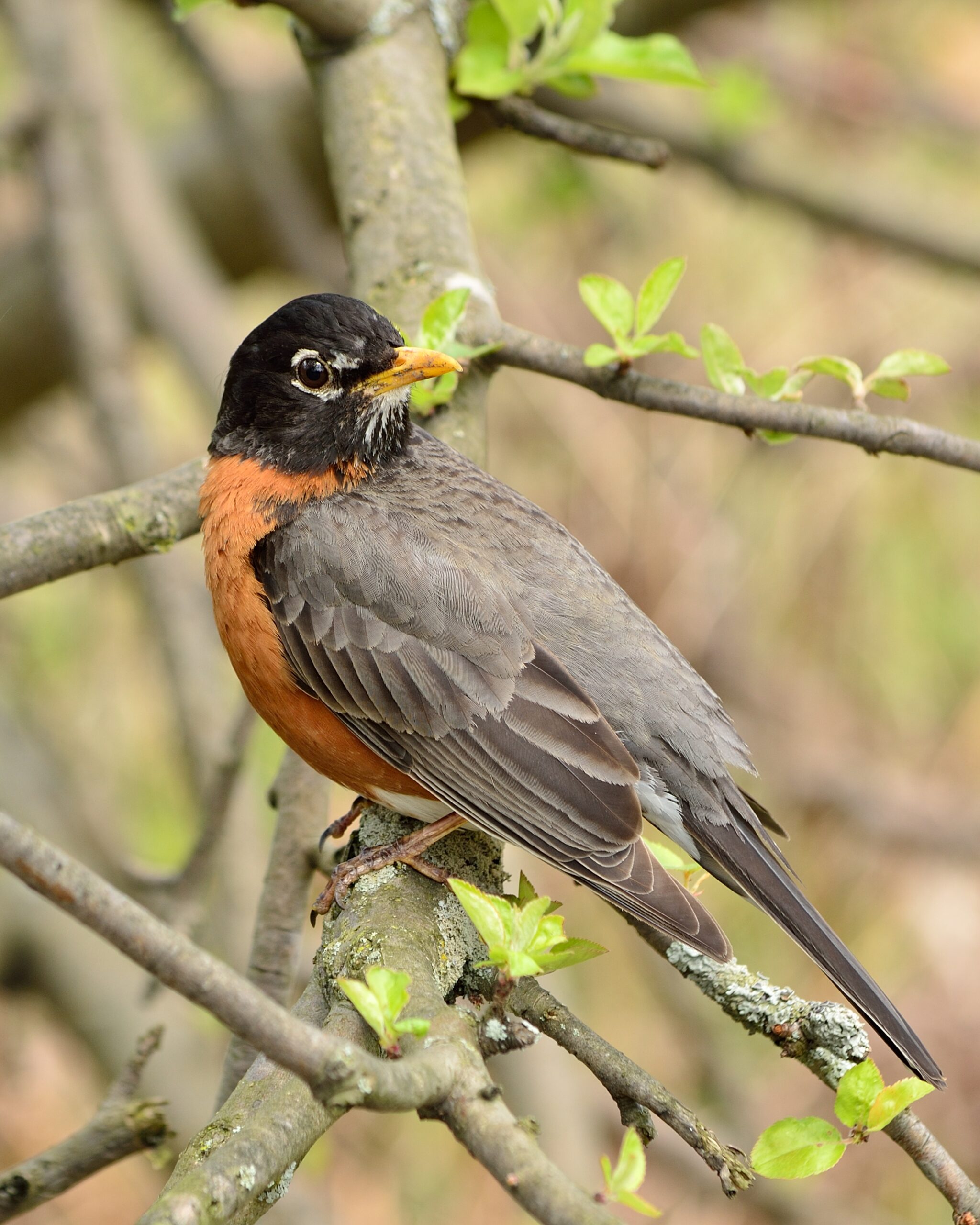 |
| 8.6 | Check Price |
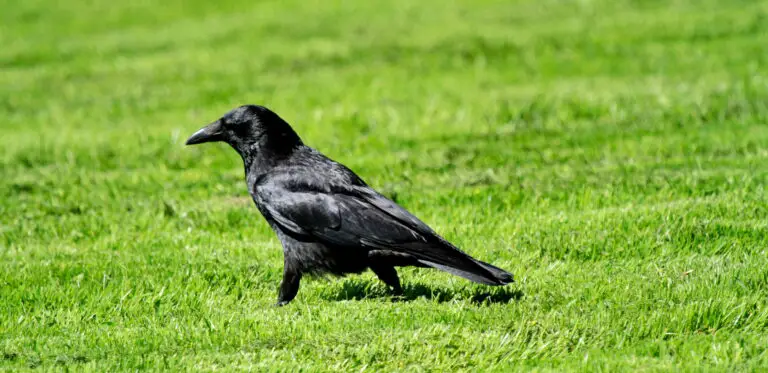 |
| 8.2 | Check Price |
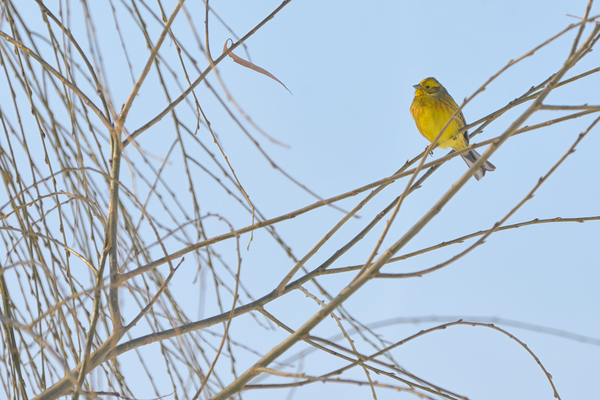 |
| 8 | Check Price |
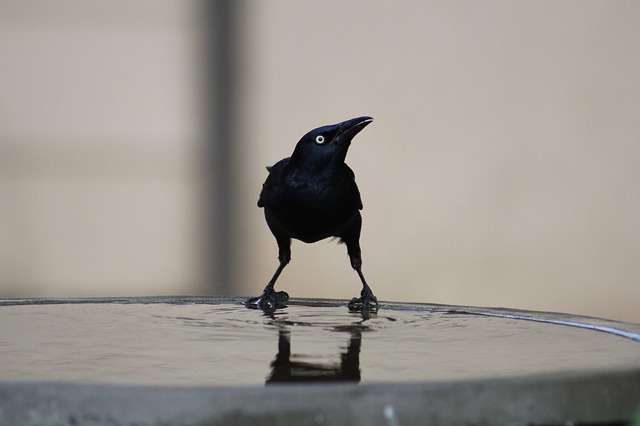 |
| 7.7 | Check Price |
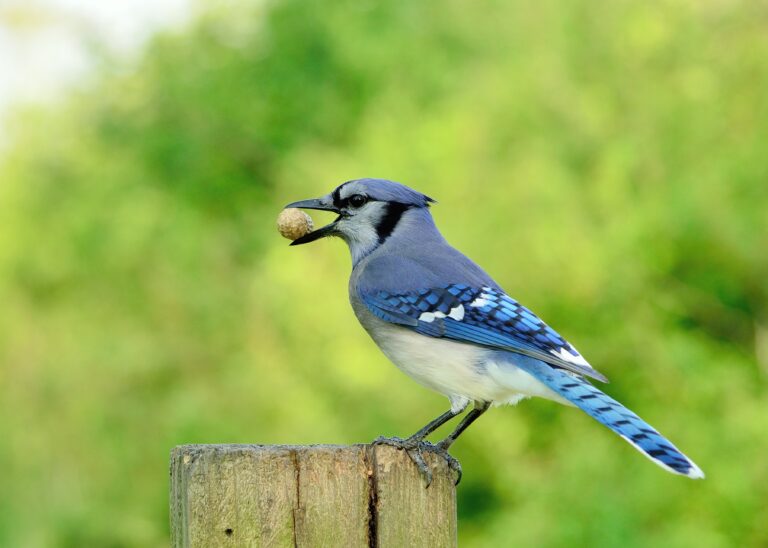 |
| 7.4 | Check Price |
 |
| 7.2 | Check Price |
 |
| 9.5 | Check Price |
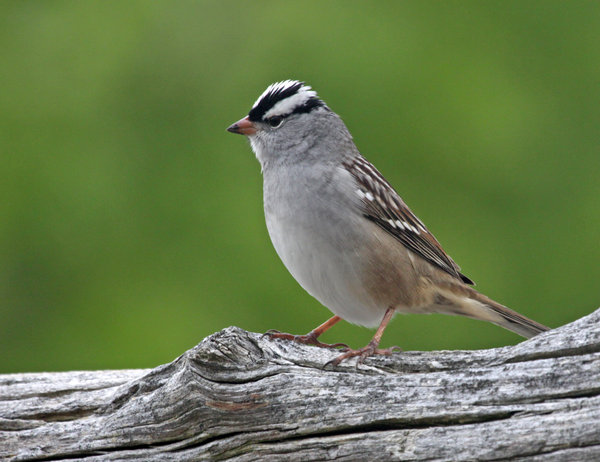 |
| 9.5 | Check Price |
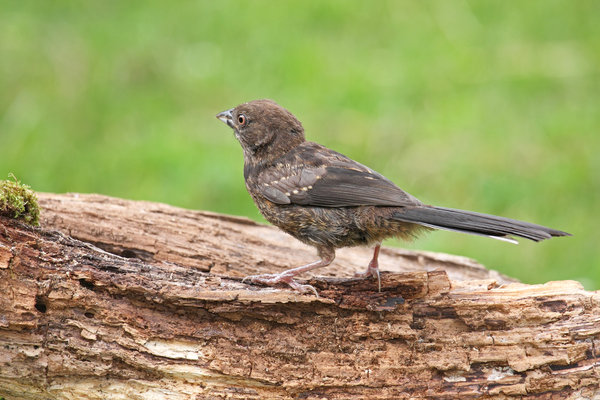 |
| 9.5 | Check Price |
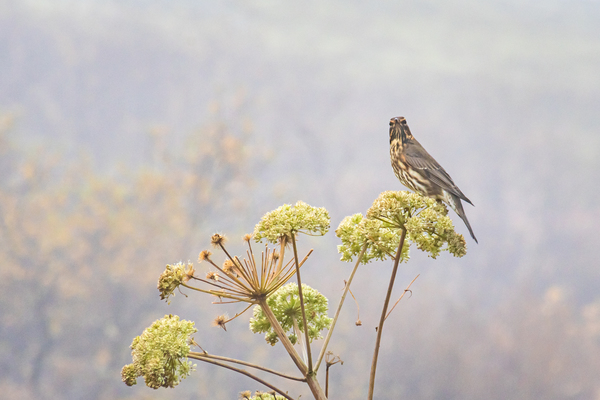 |
| 9.5 | Check Price |
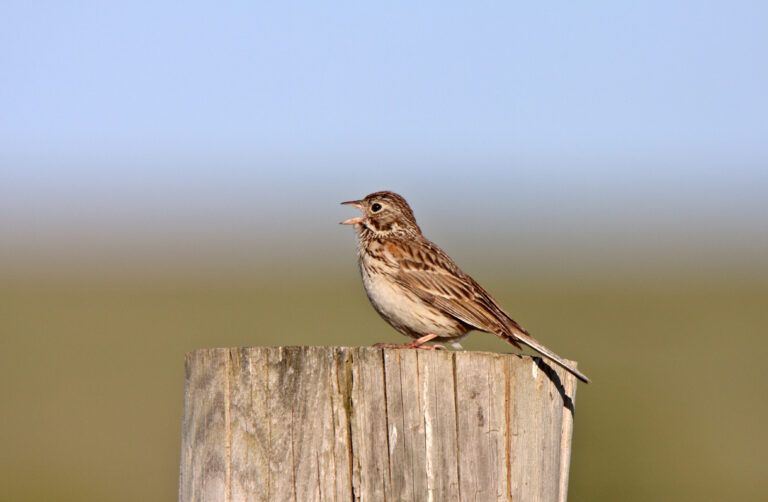 |
| 9.5 | Check Price |
 |
| 9.5 | Check Price |
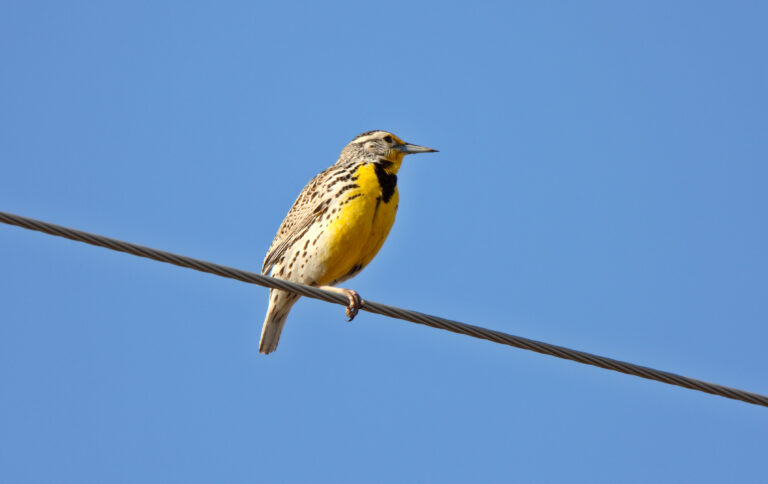 |
| 9.5 | Check Price |
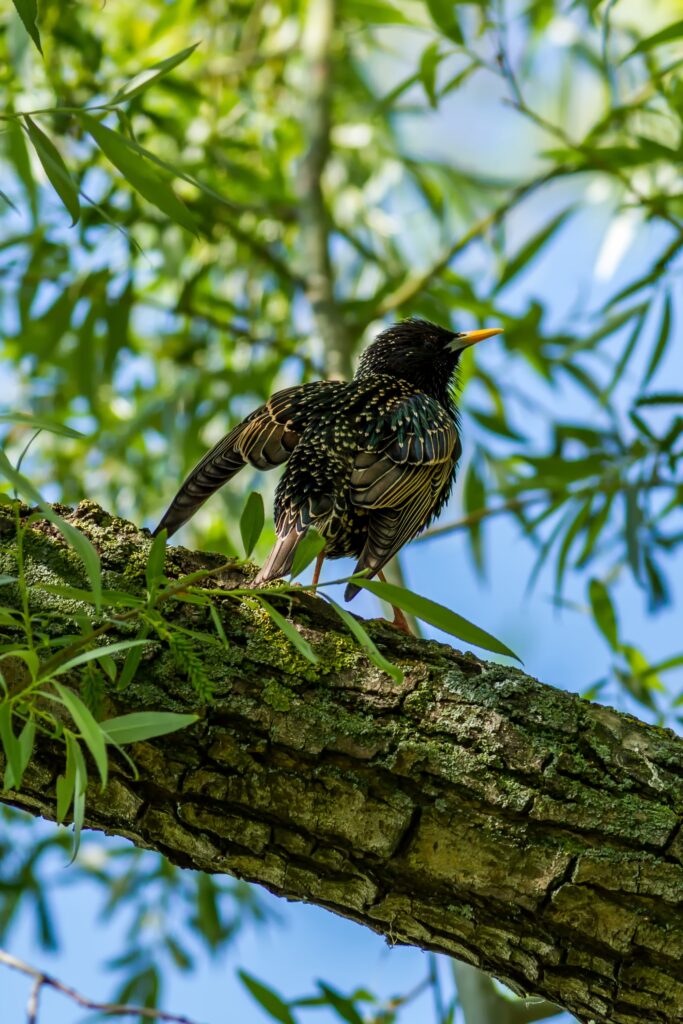 |
| 9.5 | Check Price |
 |
| 9.5 | Check Price |
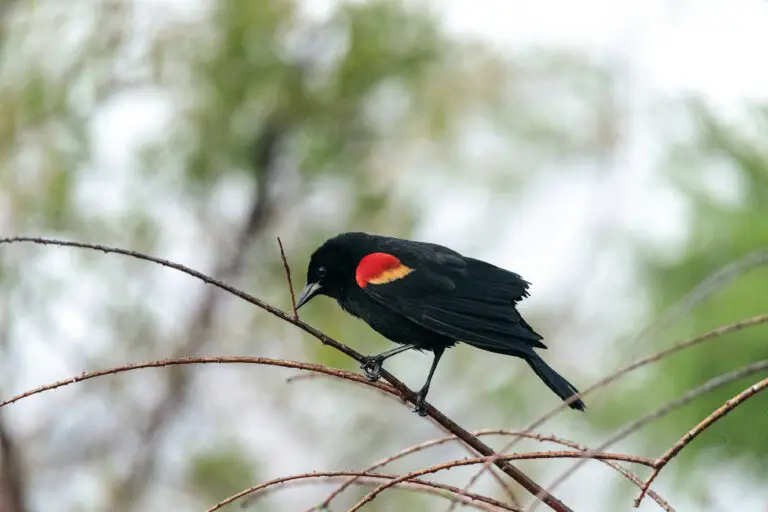 |
| 9.5 | Check Price |
 |
| 9.5 | Check Price |
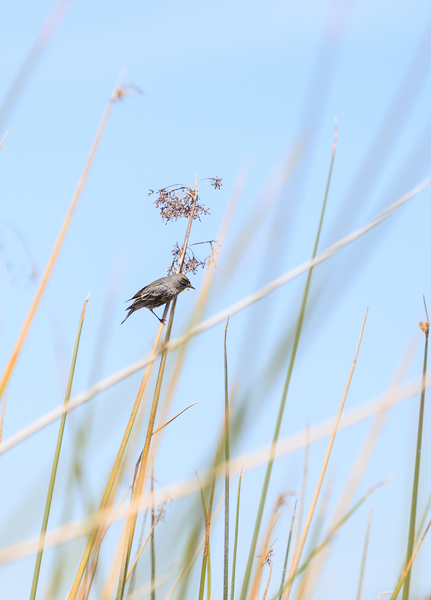 |
| 9.5 | Check Price |
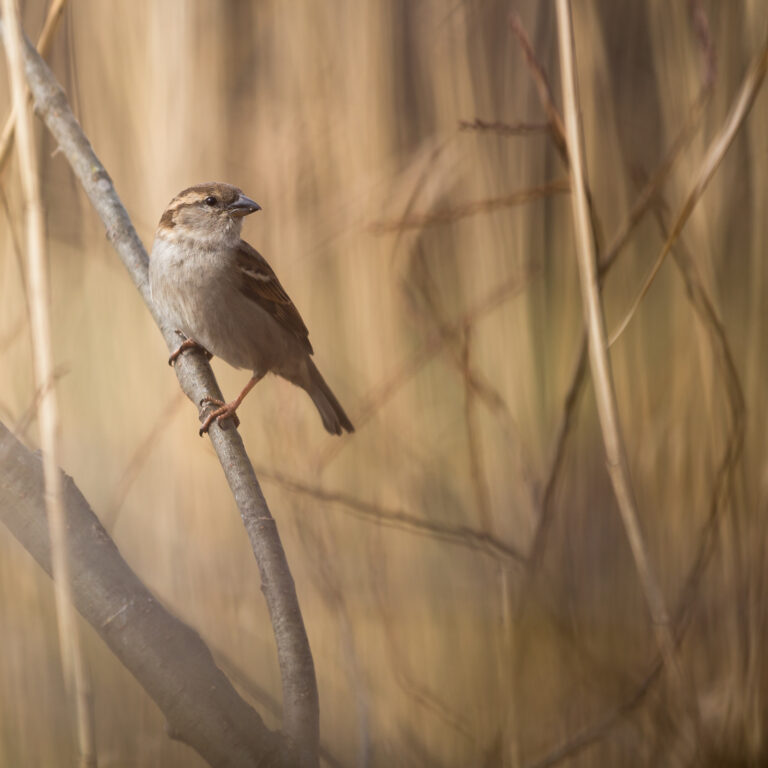 |
| 9.5 | Check Price |
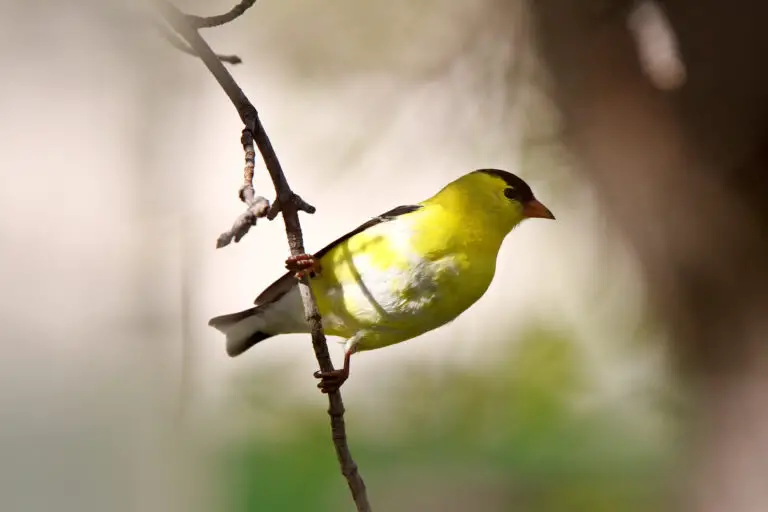 |
| 9.5 | Check Price |
If you don’t have the time to read the whole article, check out this video for a quick understanding.
Most Common Birds in Colorado
1. Mourning Dove
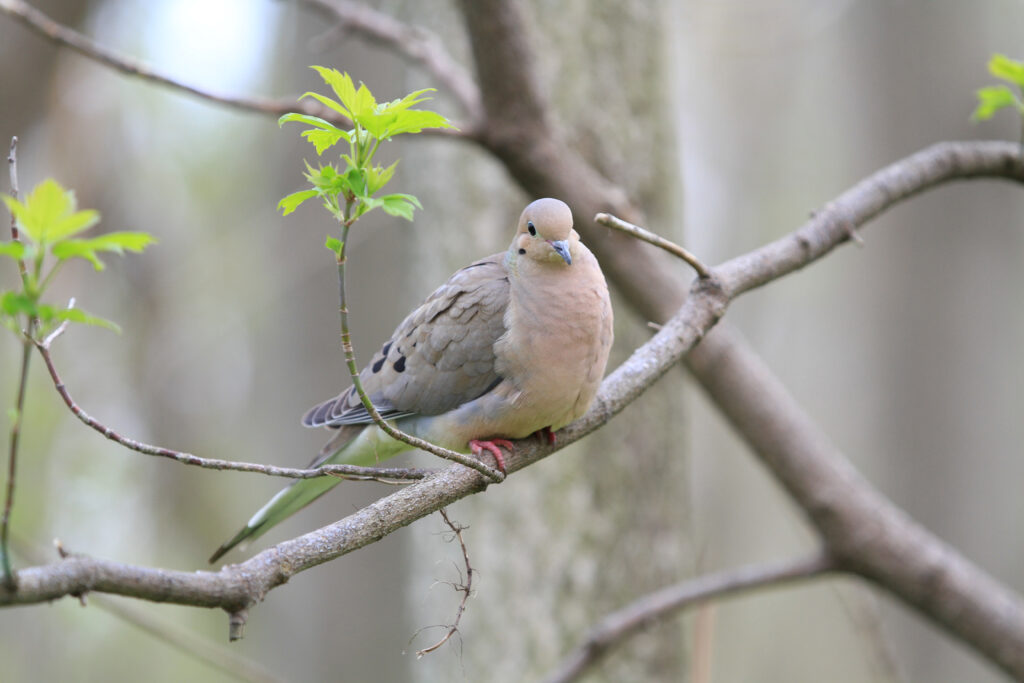
Mourning Doves (Zenaida macroura) have chubby bodies and tails and are little beautiful birds.
Mourning Doves are small, plump birds with slender necks and long, pointed tails.
They have soft, muted gray-brown feathers on their backs and wings, with lighter, buff-colored feathers on their underparts.
They have a small, round head and a black spot on their necks that looks like a collar.
Mourning Doves have dark eyes with a blue-gray ring around them, and their beaks are short and pointed.
Mourning Doves are approximately 9-13 inches long from beak to tail. Mourning Doves weigh between 3-6 ounces.
The wingspan of a Mourning Dove is approximately 17-19 inches.
Resting on telephone lines and hunting for grains on the floor in fields and back gardens, they may be observed.
Mourning Doves can be seen in open regions as well as at the edges of forested areas.
Mourning Doves are found across the lower 48 states throughout the year however they may move after reproducing in the far north.
Mourning Doves primarily feed on seeds, including those from grasses, weeds, and cultivated crops.
They also eat insects, fruits, and other plant materials.
Below are the characteristics of the Mourning Dove,
| Scientific Name | Zenaida macroura |
| Family Name | Columbidae |
| Length | 23-31 cm (9-12 in) |
| Weight | 112-170 g (3.9-6 oz) |
| Wingspan | 37-45 cm (14-18 in) |
| Habitat | Open woodland, agricultural land, urban areas |
| Food | Seeds, grains, fruits, insects |
2. Dark-eyed Junco

Dark-eyed Juncos (Junco hyemalis) are sparrows that come in a variety of hues depending on where they are found.
Dark-eyed Juncos are small, sparrow-like birds with round bodies, short necks, and relatively large heads.
They have a distinctive, conical beak and a long, squared-off tail.
The Dark-eyed Junco has several subspecies, which have different color variations, but all have a gray or brownish-gray body with a white belly and a dark hood or cap on their head.
The hood can be black, gray, brown, or reddish-brown, depending on the subspecies.
Dark-eyed Juncos are approximately 5.5-6 inches long from beak to tail. Dark-eyed Juncos weigh between 0.5-1 ounce.
The wingspan of a Dark-eyed Junco is approximately 7-8.5 inches.
They are ubiquitous over the continent and may be found in open and somewhat forested regions, typically on the ground.
In the west and the Rocky Mountains, several species can be found all year.
In the wintertime, those who breed in Canada move south to the United States.
Diet: Dark-eyed Juncos primarily feed on seeds and insects.
Their diet varies depending on the season and availability of food, but they commonly eat seeds from grasses, weeds, and trees.
Below are the characteristics of the Dark-eyed Junco,
| Scientific Name | Junco hyemalis |
| Family Name | Passerellidae |
| Length | 14-16 cm (5.5-6.3 in) |
| Weight | 18-30 g (0.6-1.1 oz) |
| Wingspan | 18-25 cm (7-10 in) |
| Habitat | Forests, woodlands, suburban areas, mountainous regions |
| Food | Seeds, insects, berries |
3. Broad-tailed Hummingbird

Broad-tailed Hummingbirds (Selasphorus platycercus) have gleaming greenback brownish wings and white breasts and bellies and they live at higher altitudes.
Females and youngsters have green dots on their necks and cheeks, while males have an iridescent rose throat.
During late May and August Broad-tailed Hummingbirds nest in high meadows and open woods between 5,000 and 10,000 feet in the mid-west before moving southward for the wintertime.
The Broad-tailed Hummingbird’s pulse rate and body heat may slow to the extent of torpor as a consequence of the cold at higher altitudes.
Broad-tailed Hummingbirds are approximately 3.5-4 inches long from beak to tail. Broad-tailed Hummingbirds weigh between 0.1-0.2 ounces.
The wingspan of a Broad-tailed Hummingbird is approximately 4.5-5 inches.
Hummingbirds eat on nectar from flowers and Broad-tailed Hummingbirds will visit hummingbird feeders to sip from crimson columbine and scarlet gilia.
They eat tiny insects to complement their nutrition, and their young are also fed insects.
To lure more Broad-tailed Hummingbirds fill a hummingbird feeder with sugar water and grow tubular plants in your yard.
Below are the characteristics of the Broad-tailed Hummingbird,
| Scientific Name | Selasphorus platycercus |
| Family Name | Trochilidae |
| Length | 9-10 cm (3.5-4 in) |
| Weight | 3-5 g (0.1-0.2 oz) |
| Wingspan | 12-13 cm (4.5-5 in) |
| Habitat | Forests, woodlands, mountain meadows |
| Food | Nectar, insects, sap |
4. Black-capped Chickadee
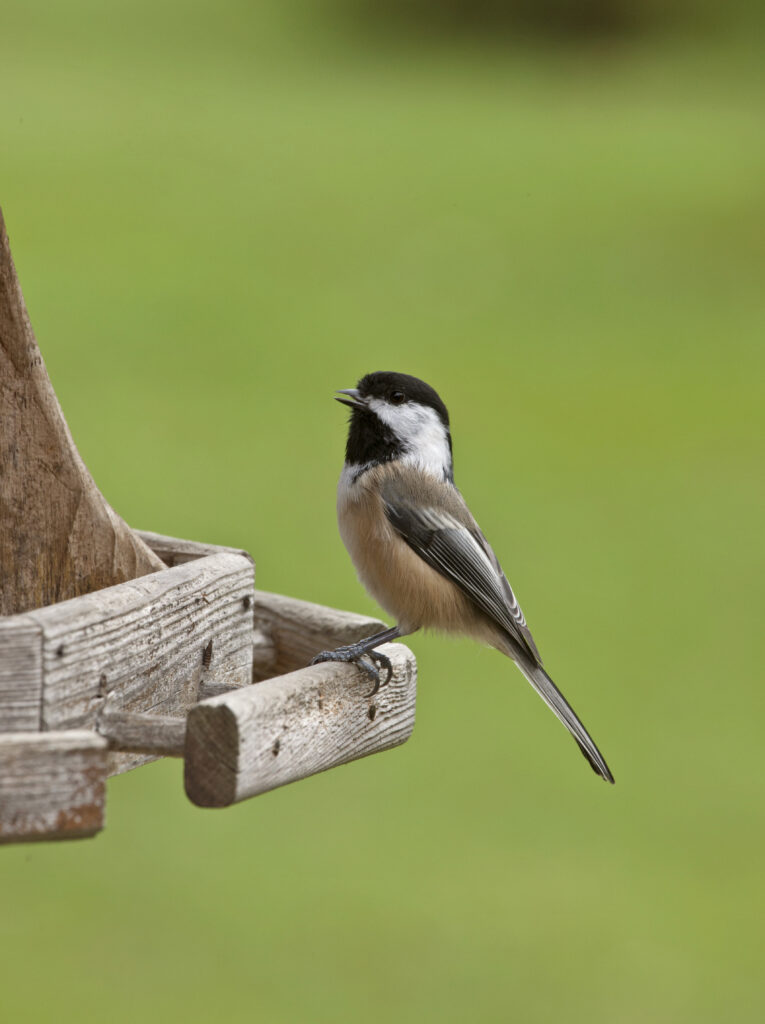
Black-capped Chickadees (Poecile atricapillus) are small, lively birds with round bodies and short, thick necks.
They have distinctive black caps and bibs on their heads and a white cheek patch on each side of their face.
They have a grayish-black back and wings and a white belly.
They have a short, straight bill and a long, narrow tail.
Black-capped Chickadees are approximately 4.5-5 inches long from beak to tail. Black-capped Chickadees weigh between 0.3-0.5 ounces.
The wingspan of a Black-capped Chickadee is approximately 6-7 inches.
Seeds, berries, insects, and suet are eaten by black-capped chickadees.
Suet and peanuts or peanut butter are all good ways to attract Black-capped Chickadees to your yard. (If you are not sure where to hang suet feeder? then check out this article)
They’ll even eat from your hand and they’re usually the first to notice new feeders.
They’ll utilize nest boxes as well especially if they’re filled with wood shavings.
Below are the characteristics of the Black-capped Chickadee,
| Scientific Name | Poecile atricapillus |
| Family Name | Paridae |
| Length | 11-14 cm (4.3-5.5 in) |
| Weight | 9-14 g (0.3-0.5 oz) |
| Wingspan | 16-21 cm (6.3-8.3 in) |
| Habitat | Forests, woodlands, suburban areas |
| Food | Insects, seeds, berries |
5. American Robin

American Robins (Turdus migratorius) are medium-sized songbirds with distinctive rust-red breasts, grayish-brown back and wings, and a white belly.
They have a blackish head with a white eye ring and a yellow bill. Males and females look similar, although males tend to have slightly brighter coloring.
They are often seen hopping along the ground or perching in trees.
American Robins are approximately 9-11 inches long from beak to tail. American Robins weigh between 2.7-3.0 ounces.
The wingspan of an American Robin is approximately 12-16 inches.
American Robins may be found in a variety of environments including woodlands, forests, and mountains as well as fields and lawns.
Earthworms, snails, and fruit are among their favorite foods.
To attract more American Robins to your yard use suet peanut hearts and mealworms.
Platform feeders or food strewn on the ground are ideal and Plant juniper, hawthorn, and dogwood as well as other natural plants that yield berries.
Below are the characteristics of the American Robin,
| Scientific Name | Turdus migratorius |
| Family Name | Turdidae |
| Length | 23-28 cm (9-11 in) |
| Weight | 77-85 g (2.7-3.0 oz) |
| Wingspan | 31-41 cm (12-16 in) |
| Habitat | Woodlands, suburban areas, parks, gardens |
| Food | Insects, worms, fruits, berries |
6. American Crow

American Crows (Corvus brachyrhynchos) in the United States are big black birds with a loud cawing voice.
American Crows are large, all-black birds with a thick bills and a distinctive cawing call.
They have a wingspan that is almost as long as their body and a squared-off tail. Their feathers have a glossy, iridescent sheen in the sunlight.
American Crows are approximately 16-21 inches long from beak to tail. American Crows weigh between 11-21 ounces.
The wingspan of an American Crow is approximately 33-39 inches.
They are common birds that may be found in a variety of environments, such as trees, fields, and cities.
They consume a wide variety of foods and like to graze on the ground, where they eat insects, seeds, and fruit.
American Crows are omnivores, They also consume fish, mussels, and clams as well as eggs and nestlings from a variety of bird species.
Huge flocks of approximately two million American Crows assemble in communal roosts throughout the winter.
If you sprinkle peanuts in your backyard, you can attract more American Crows, but if you leave rubbish or pet food out, they can become a problem.
Below are the characteristics of the American Crow,
| Scientific Name | Corvus brachyrhynchos |
| Family Name | Corvidae |
| Length | 40-50 cm (16-20 in) |
| Weight | 315-620 g (11-22 oz) |
| Wingspan | 86-100 cm (34-39 in) |
| Habitat | Forests, woodlands, urban areas |
| Food | Insects, small mammals, fruits, seeds, carrion |
7. Yellow Warbler

Yellow Warblers (Setophaga petechia) are tiny brilliant yellow birds with a yellow-green back and chestnut stripes on the breast that may be seen in the summer.
Yellow Warblers are small, bright yellow songbirds with rounded heads, short necks, and thin pointed bills.
Males have rusty streaks on their breasts and belly, while females have a paler yellow and lack the streaking. Both sexes have black eyes and dark wings.
Yellow Warblers are approximately 4.7-5.5 inches long from beak to tail. Yellow Warblers weigh between 0.3-0.4 ounces.
The wingspan of a Yellow Warbler is approximately 7.5 inches.
They go a long way to breed and move throughout most of North America before wintering in Central and northern South America.
They can be observed in the extreme south during migration.
Yellow Warblers hunt on insects such as midges, beetles, and wasps in thickets along streams and marshes as well as at the borders of fields.
Because warblers are secretive and consume mostly insects, they are difficult to entice to your yard. Suet, peanut butter, and natural plants that attract insects can be used to attract Yellow Warblers, so no pesticides or excessive cleaning are required, and Birdbaths with fountains as well as isolated thickets for safety.
Below are the characteristics of the Yellow Warbler,
| Scientific Name | Setophaga petechia |
| Family Name | Parulidae |
| Length | 10-13 cm (4-5 in) |
| Weight | 7-12 g (0.2-0.4 oz) |
| Wingspan | 16-20 cm (6-8 in) |
| Habitat | Wetlands, riparian areas, forests, gardens |
| Food | Insects, spiders, berries |
8. Common Grackle

Common Grackles (Quiscalus quiscula) are blackbirds with shiny iridescent bodies that are higher and longer-tailed than normal blackbirds.
Common Grackles are medium-sized blackbirds with long tails, thick bills, and yellow eyes.
Males are larger and have iridescent black feathers with a purple or green sheen, while females have less iridescence and brownish-black plumage.
Both sexes have distinctive keel-shaped tails and long legs.
Common Grackles are approximately 12-13 inches long from beak to tail. Common Grackles weigh between 2.8-5.0 ounces.
The wingspan of a Common Grackle is approximately 14-18 inches.
They consume a variety of crops, but primarily maize, and congregate in loud groups high in the trees.
They will also consume trash, making them a nuisance.
Open woods, marshes, and fields are among their many habitats.
In the winter, they may congregate in the millions to feed and roost alongside other blackbird species.
In much of the east and all of the southern states, common grackles are year-round residents.
However, after mating in the extreme north and west of their habitat they move south.
Most mixed grain or seeds placed on ground feeders or platform feeders can attract more Common Grackles to your garden.
Below are the characteristics of the Common Grackle,
| Scientific Name | Quiscalus quiscula |
| Family Name | Icteridae |
| Length | 28-34 cm (11-13 in) |
| Weight | 74-142 g (2.6-5.0 oz) |
| Wingspan | 36-46 cm (14-18 in) |
| Habitat | Wetlands, fields, woodlands, urban areas |
| Food | Insects, seeds, fruit, small vertebrates |
9. Blue Jay
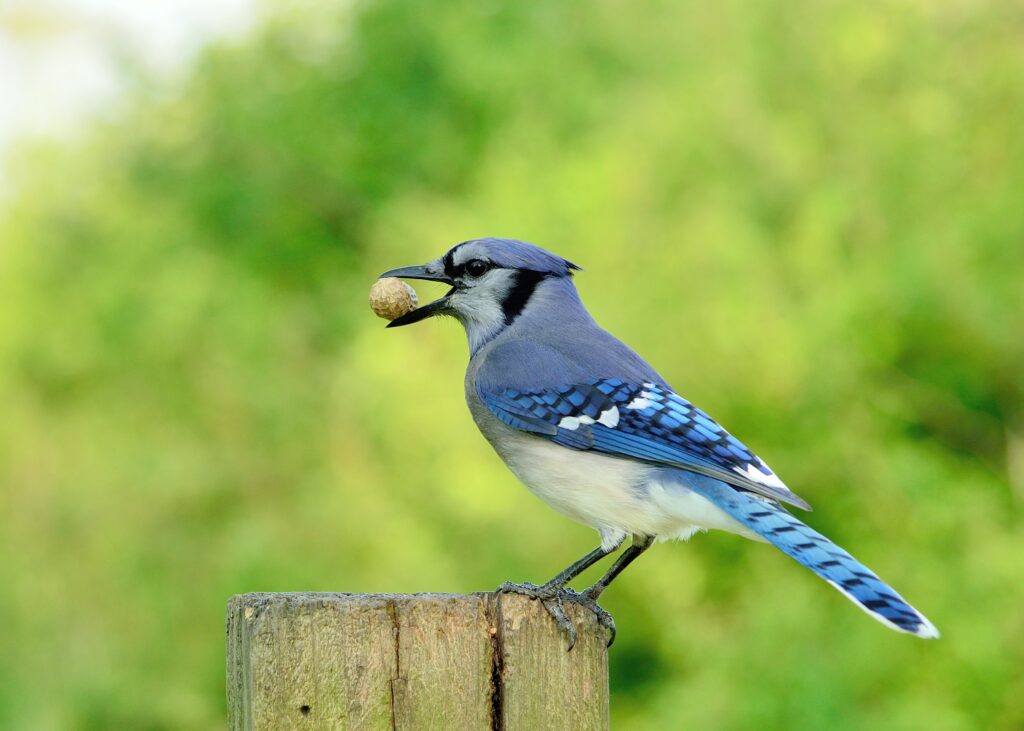
Blue Jays (Cyanocitta cristata) are large songbirds with a blue crest and white undersides that can be observed in large flocks.
Blue Jays are medium-sized songbirds with a blue crest on their head, a blue back, wings, and tail, and a white face and underparts.
They have a black collar around their neck and a black band across their eyes. Their bill is black and they have black legs and feet.
Blue Jays are approximately 9-12 inches long from beak to tail. Blue Jays weigh between 2.5-3.5 ounces.
The wingspan of a Blue Jay is approximately 13-17 inches.
They are loud birds that fly in family groups in search of acorns.
Massive groups from the far northwest of the United States may migrate down the Great Lakes and Atlantic coast although they are mostly permanent.
They live in the woods but like to be near oak trees because they consume acorns.
They consume insects and grain in addition to acorns. They may also steal eggs or nestlings from nests.
Feeding sunflower seeds or suet in tray feeders or hopper feeders on a pole will help you attract more Blue Jays to your yard.
Below are the characteristics of the Blue Jay,
| Scientific Name | Cyanocitta cristata |
| Family Name | Corvidae |
| Length | 25-30 cm (9.8-11.8 in) |
| Weight | 70-100 g (2.5-3.5 oz) |
| Wingspan | 34-43 cm (13-17 in) |
| Habitat | Forests, woodlands, urban areas |
| Food | Insects, nuts, seeds, fruit, small vertebrates |
10. Downy Woodpecker

Downy Woodpeckers (Picoides pubescens) are little birds that eat from backyard feeders.
They’re commonly confused for chickadees and nuthatches among other species.
Downy Woodpeckers are small woodpeckers with black and white striped plumage.
They have a black back, wings, and tail, with white underparts and a white face with a black cap. Males have a small red patch on the back of their heads.
Downy Woodpeckers have a straight, chisel-shaped bill and a stiff tail that helps them climb tree trunks.
They resemble Hairy Woodpeckers but are smaller.
Downy Woodpeckers are approximately 6-7 inches long from beak to tail. Downy Woodpeckers weigh between 0.7-1.0 ounces.
The wingspan of a Downy Woodpecker is approximately 9-12 inches.
Downy woodpeckers consume insects, berries, and grains and can be found in woodlots, municipal parks, and backyards.
Suet feeders are a good way to attract more Downy Woodpeckers to your yard but they will also eat millet and peanuts from platform feeders.
Below are the characteristics of the Downy Woodpecker,
| Scientific Name | Dryobates pubescens |
| Family Name | Picidae |
| Length | 14-18 cm (5.5-7 in) |
| Weight | 20-33 g (0.7-1.2 oz) |
| Wingspan | 25-31 cm (9.8-12.2 in) |
| Habitat | Forests, woodlands, suburban areas |
| Food | Insects, seeds, nuts, fruit |
11. White-breasted Nuthatch

White-breasted Nuthatches (Sitta carolinensis) are small energetic birds with a gray-blue back and white face and belly as well as a black crown.
White-breasted Nuthatch is a stocky bird with a blue-gray back and wings, white underparts, and a distinctive black cap on its head.
Males and females look very similar, with females having slightly duller plumage and smaller black caps.
Overall, the White-breasted Nuthatch is a fascinating and unique bird that is beloved by birdwatchers and nature enthusiasts alike.
The White-breasted Nuthatch is a small bird, measuring about 5.5 inches in length from the tip of its bill to the end of its tail.
This bird typically weighs between 0.6-1.1 ounces, with males being slightly larger and heavier than females.
The wingspan of the White-breasted Nuthatch ranges from 8.5-10.5 inches.
They live in deciduous forests, parks, and yards with trees as well as at bird feeders.
They eat beetles and their larvae and spiders among other insects.
White-breasted Nuthatches also consume seeds and nuts, such as hawthorns, as well as maize harvests on occasion.
They push large nuts and acorns into tree bark before smashing them apart with their bills to extract the seed.
Sunflower seeds and nuts in tube feeders or suet feeders can attract more White-breasted Nuthatches to your yard.
Below are the characteristics of the White-breasted Nuthatch,
| Scientific Name | Sitta carolinensis |
| Family Name | Sittidae |
| Length | 12-14 cm (4.7-5.5 in) |
| Weight | 18-30 g (0.6-1.1 oz) |
| Wingspan | 20-27 cm (7.9-10.6 in) |
| Habitat | Forests, woodlands, suburban areas |
| Food | Insects, seeds, nuts |
12. White-crowned Sparrow

The White-crowned Sparrow (Zonotrichia leucophrys) is a medium-sized bird, measuring around 6-7 inches in length from the tip of its bill to the end of its tail.
This bird typically weighs between 0.7-1.1 ounces, with males being slightly larger and heavier than females.
The wingspan of the White-crowned Sparrow ranges from 7-9 inches.
White-crowned Sparrow has a distinctive black and white striped head with a bright white crown.
They also have a gray or brown back, a white underbelly, and a long tail with white outer feathers.
Juvenile birds have brown and buff striped heads instead of the distinctive black and white stripes of adults.
They reproduce in Alaska and northern Canada before traveling to the lower states and Mexico for the wintertime.
Some may stay throughout the entire year near the Pacific Coast and west.
In weedy fields and yards, White-crowned Sparrows can be observed searching for plant and grass seeds as well as fruit such as elderberries and raspberries.
Sunflower seeds and a variety of other seeds dropped by other birds at feeders might attract additional White-crowned Sparrows to your yard.
Below are the characteristics of the White-crowned Sparrow,
| Scientific Name | Zonotrichia leucophrys |
| Family Name | Passerellidae |
| Length | 16-18 cm (6.3-7.1 in) |
| Weight | 22-32 g (0.8-1.1 oz) |
| Wingspan | 23-30 cm (9.1-11.8 in) |
| Habitat | Open woodlands, brushy areas, suburban areas |
| Food | Seeds, insects, berries |
13. Spotted Towhee

Spotted Towhees (Pipilo maculatus) are big sparrows with blackheads and backs in males and brown heads and backs in females.
Males and females both have reddish-brown sides, white bellies, and white patches on their wings and backs.
The Spotted Towhee is a medium-sized bird, measuring around 7-8 inches in length from the tip of its bill to the end of its tail.
This bird typically weighs between 1.1-1.8 ounces, with males being slightly larger and heavier than females.
The wingspan of the Spotted Towhee ranges from 8-9 inches.
They are approximately the size of a Robin and have lengthy tails.
Spotted Towhees can be seen scratching about on the ground in dense tangles of bushes for insects such as beetles, grasshoppers, and bees.
They consume berries and seeds as well.
They are ancestral to the Pacific coast but after breeding, they migrate from northern central states to the central states emerging in a swath from north to south in the winter.
If you allow overgrown borders in your yard, more Spotted Towhees will visit platform feeders or ground feeders for Hulled Sunflower seeds, Millet, and Milo.
Below are the characteristics of the Spotted Towhee,
| Scientific Name | Pipilo maculatus |
| Family Name | Passerellidae |
| Length | 17-21 cm (6.7-8.3 in) |
| Weight | 33-49 g (1.2-1.7 oz) |
| Wingspan | 23-29 cm (9.1-11.4 in) |
| Habitat | Brushy areas, forests, and woodland edges in western North America |
| Food | Insects, spiders, seeds, and fruits |
14. Mountain Chickadee

Mountain Chickadees (Poecile gambeli) have black and whiteheads and grey bodies, with darker grey on the back and lighter grey beneath.
The Mountain Chickadee is a small bird, measuring around 4.5-5 inches in length from the tip of its bill to the end of its tail.
This bird typically weighs between 0.3-0.4 ounces, with males and females being similar in size and weight.
The wingspan of the Mountain Chickadee ranges from 6.5-7.5 inches.
They live in the western mountains and are frequently found in evergreen woods, particularly conifers.
Mountain Chickadees dine on insects, nuts, and seeds, and they frequent backyard feeders.
Mountain Chickadees frequently save food for later use and establish a food store.
Adding nest boxes to your yard will attract more Mountain Chickadees and they will visit most types of feeders including mealworms and peanut butter.
Below are the characteristics of the Mountain Chickadee,
| Scientific Name | Poecile gambeli |
| Family Name | Paridae |
| Length | 11.5-13.5 cm (4.5-5.3 in) |
| Weight | 9-14 g (0.3-0.5 oz) |
| Wingspan | 16.5-18 cm (6.5-7.1 in) |
| Habitat | Coniferous forests in western North America |
| Food | Insects, spiders, seeds, and fruits |
15. Song Sparrow
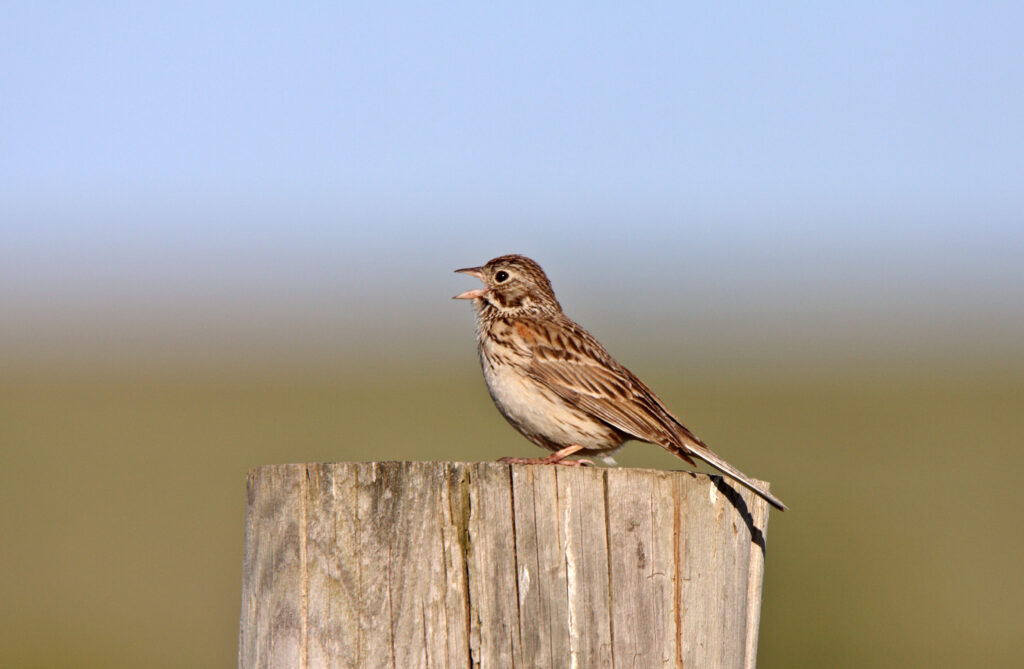
Song sparrows (Melospiza melodia) aren’t as noticeable as other backyard birds, but in the spring and summer, these mostly brown-streaked birds utilize their almost continuous song to attract mates.
Song Sparrow has a brownish-gray back and wings, with streaks of brown and black on its breast and sides.
They also have a gray or brown head with a distinctive dark brown stripe through the eye.
Juvenile birds have a more muted coloration and less distinct markings.
The Song Sparrow is a small bird, measuring around 5.5-7 inches in length from the tip of its bill to the end of its tail.
This bird typically weighs between 0.4-1.0 ounces, with males being slightly larger and heavier than females.
The wingspan of the Song Sparrow ranges from 7.5-9 inches.
They can be seen singing in open and damp places, frequently perched atop a low bush.
They come to the backyard feeders on a regular basis.
Beetles, midges, and earthworms are among the insects and plants they consume.
Sunflowers, wild cherries, blackberries, and rice are other favorites.
More song sparrows will come to your garden feeders if you put black oil sunflower seeds and nyjer on platform feeders.
Below are the characteristics of the Song Sparrow,
| Scientific Name | Melospiza melodia |
| Family Name | Passerellidae |
| Length | 14-18 cm (5.5-7.1 in) |
| Weight | 18-46 g (0.6-1.6 oz) |
| Wingspan | 20-27 cm (7.9-10.6 in) |
| Habitat | Wetlands, brushy fields, and forests in North America |
| Food | Seeds, insects, and fruits |
16. Western Kingbirds

Western Kingbirds (Tyrannus verticalis) are large flycatchers with yellow bellies grayish-brown wings and darker tails.
Western Kingbird has a gray head and back, a white throat and belly, and yellow breast.
They also have a distinctive black tail with white outer feathers that are visible in flight.
Juvenile birds have a more muted coloration and less distinct markings.
The Western Kingbird is a medium-sized bird, measuring around 7-9 inches in length from the tip of its bill to the end of its tail.
This bird typically weighs between 1.0-1.5 ounces, with males and females being similar in size and weight.
The wingspan of the Western Kingbird ranges from 13-15 inches.
They breed in western North America where they may be seen throughout summer before migrating to Mexico and Central America for the winter.
Some may spend the winter in Florida’s south.
They prefer open environments and sit on fences and utility wires, waiting for insects to fly past before grabbing them mid-flight.
They are frequently seen on the edge of forests, where they may nest in the trees and feed openly.
They will also build their nests in man-made buildings.
The Western Kingbird’s diet consists mainly of insects, including bees, wasps, grasshoppers, and beetles.
Below are the characteristics of the Western Kingbirds,
| Scientific Name | Tyrannus verticalis |
| Family Name | Tyrannidae |
| Length | 19-23 cm (7.5-9.1 in) |
| Weight | 27-40 g (0.95-1.4 oz) |
| Wingspan | 35-40 cm (14-16 in) |
| Habitat | Open habitats, such as grasslands and agricultural areas in western North America |
| Food | Insects, especially flying insects such as bees and wasps |
17. Western Meadowlark

Western Meadowlarks (Sturnella neglecta) may brighten your day with their brilliant yellow bellies and melodic singing.
Western Meadowlark has a brownish back and wings, with bright yellow underparts and a distinctive black V-shaped bib on its chest.
They also have a long, pointed bill and a yellow eyebrow stripe.
Juvenile birds have a more muted coloration and less distinct markings.
The Western Meadowlark is a medium-sized bird, measuring around 9.5-11 inches in length from the tip of its bill to the end of its tail.
This bird typically weighs between 3-5 ounces, with males being slightly larger and heavier than females.
The wingspan of the Western Meadowlark ranges from 16-18 inches.
This is most likely what makes them so popular that they have been designated as the state bird of six states.
Western Meadowlarks are little blackbirds with brown and white upper parts and a black V-shaped band across the brilliant yellow breast that becomes grey in the winter.
They breed in northern areas of the United States and Canada before migrating south. Those who live in the west and the center of the country stay throughout the entire year.
The Western Meadowlark’s diet consists mainly of insects, including grasshoppers, crickets, and beetles, as well as seeds and small fruits.
Below are the characteristics of the Western Meadowlark,
| Scientific Name | Sturnella neglecta |
| Family Name | Icteridae |
| Length | 20-28 cm (7.9-11.0 in) |
| Weight | 107-170 g (3.8-6.0 oz) |
| Wingspan | 38-45 cm (15-18 in) |
| Habitat | Grasslands and prairies in western North America |
| Food | Insects, spiders, seeds, and fruits |
18. European Starling

European starlings (Sturnus vulgaris) are not native to the United States, yet they have become one of the most common songbirds.
European Starling has a glossy black back and wings, with iridescent green and purple highlights.
They also have a short, pointed bill and a yellow bill base. In the winter, their plumage can take on a speckled appearance.
Juvenile birds have a more muted coloration and less distinct markings.
The European Starling is a medium-sized bird, measuring around 7-9 inches in length from the tip of its bill to the end of its tail.
This bird typically weighs between 2-3 ounces, with males being slightly larger and heavier than females.
The wingspan of the European Starling ranges from 12-16 inches.
Some people consider these birds to be pests because of their aggressive nature.
They fly in big loud flocks and sit in groups on tree limbs or soar over fields in flocks.
The European Starling’s diet consists mainly of insects, including beetles, ants, and grasshoppers, as well as fruits and seeds.
Black oil sunflower seeds and peanuts will attract more European Starlings to your garden feeders.
Below are the characteristics of the European Starling,
| Scientific Name | Sturnus vulgaris |
| Family Name | Sturnidae |
| Length | 19-23 cm (7.5-9.1 in) |
| Weight | 60-110 g (2.1-3.9 oz) |
| Wingspan | 31-44 cm (12-17 in) |
| Habitat | Urban and suburban areas, farmland, and open woodland in Europe and North America |
| Food | Insects, fruits, berries, and seeds |
19. Northern Flicker

Northern Flickers (Colaptes auratus) are big woodpeckers with brownish coloration black patches and crescents and red on the neck, about the size of a robin or a crow.
Eastern birds’ tails and wing feathers are brilliant yellows, whereas western birds’ are red.
The Northern Flicker is a medium-sized woodpecker, measuring around 11-14 inches in length from the tip of its bill to the end of its tail.
This bird typically weighs between 3-5 ounces, with males being slightly larger and heavier than females.
The wingspan of the Northern Flicker ranges from 17-21 inches.
In woodlands and forest borders, they can be seen on the ground searching for ants and beetles.
Those who breed in Canada or Alaska move to the southern states, although they can be seen throughout the lower 48 states all year.
The Northern Flicker’s diet consists mainly of insects, including ants, beetles, and termites, as well as fruits and seeds.
Below are the characteristics of the Northern Flicker,
| Scientific Name | Colaptes auratus |
| Family Name | Picidae |
| Length | 28-36 cm (11-14 in) |
| Weight | 85-165 g (3.0-5.8 oz) |
| Wingspan | 42-54 cm (17-21 in) |
| Habitat | Forests, woodlands, and urban areas in North America |
| Food | Insects, fruits, nuts, and seeds |
20. Red-winged Blackbird
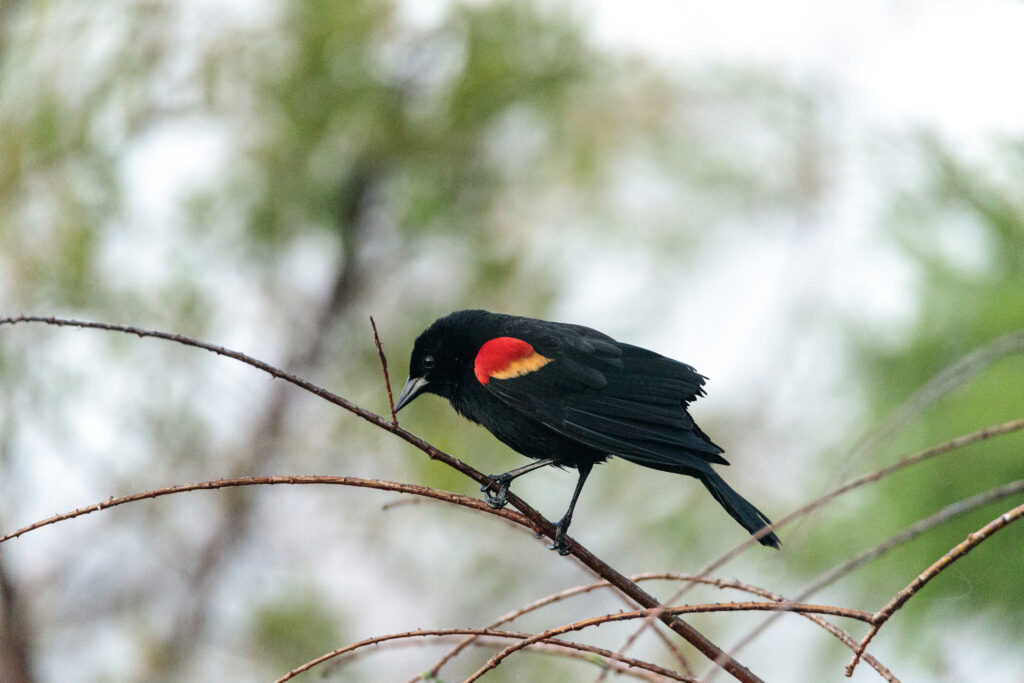
The Red-winged Blackbird (Agelaius phoeniceus) is a medium-sized songbird, measuring around 7-9 inches in length from the tip of its bill to the end of its tail.
This bird typically weighs between 1.5-2.5 ounces, with males being slightly larger and heavier than females.
The wingspan of the Red-winged Blackbird ranges from 12-16 inches.
Male Red-winged Blackbird has glossy black plumage with distinctive red and yellow shoulder patches, or epaulets.
The female has a more subdued brownish-black plumage with streaks on the breast and a pale eyebrow stripe.
Both males and females have a sharply pointed bill and a long, conical tail.
They are frequently seen perched on telephone lines, and during the mating season, the males will fiercely protect their territory even attacking humans who come too close to their nests.
During the winter, they roost in huge flocks, numbering in the millions.
The Red-winged Blackbird’s diet consists mainly of insects, including flies, beetles, and caterpillars, as well as seeds and fruits.
They forage on the ground or in vegetation, using their sharp bills to probe for insects and pick at seeds.
Below are the characteristics of the Red-winged Blackbird,
| Scientific Name | Agelaius phoeniceus |
| Family Name | Icteridae |
| Length | 18-24 cm (7.1-9.4 in) |
| Weight | 41-75 g (1.4-2.6 oz) |
| Wingspan | 31-44 cm (12-17 in) |
| Habitat | Wetlands, marshes, and grasslands in North America |
| Food | Insects, seeds, and fruits |
21. Eurasian Collared-Dove

Eurasian Collared-Doves (Streptopelia decaocto) is an invasive species that first arrived in the United States in the 1980s and has since spread across the country.
Eurasian Collared-Dove has a distinctive black collar on its nape, a pale grayish-brown back and wings, and a whitish belly.
They have red eyes, a small black bill, and a long, tapered tail.
The Eurasian Collared-Dove is a medium-sized dove, measuring around 12-14 inches in length from the tip of its bill to the end of its tail.
This bird typically weighs between 5-8 ounces, with males and females being similar in size.
The wingspan of the Eurasian Collared-Dove ranges from 22-24 inches.
They’re also bigger and have a square tail instead of a pointed one.
They avoid dense forests, preferring locations near humans where seeds are plentiful like backyard feeders and farms.
The Eurasian Collared-Dove’s diet consists mainly of seeds and grains, as well as some insects.
Below are the characteristics of the Eurasian Collared-Dove,
| Scientific Name | Streptopelia decaocto |
| Family Name | Columbidae |
| Length | 31-33 cm (12-13 in) |
| Weight | 125-240 g (4.4-8.5 oz) |
| Wingspan | 47-55 cm (19-22 in) |
| Habitat | Urban and suburban areas, farmland, and open woodland in Europe, Asia, and North America |
| Food | Seeds, grains, and fruits |
22. Yellow-Rumped Warbler

Yellow-Rumped Warblers (Setophaga coronata) are grey with yellow flashes on the forehead and rump as well as white wings.
Females are somewhat browner than males and winter birds are lighter brown with brilliant yellow rumps and flanks which become bright yellow and grey in spring.
The Yellow-rumped Warbler is a small songbird, measuring around 5-6 inches in length from the tip of its bill to the end of its tail.
This bird typically weighs between 0.3-0.5 ounces, with males and females being similar in size.
The wingspan of the Yellow-rumped Warbler ranges from 9-10 inches.
They travel in great numbers south after breeding mostly in Canada through most of southern and central North America the Pacific Coast and into Mexico and Central America.
The Yellow-rumped Warbler’s diet consists mainly of insects, including beetles, caterpillars, and spiders, as well as fruits and berries.
Below are the characteristics of the Yellow-Rumped Warbler,
| Scientific Name | Setophaga coronata |
| Family Name | Parulidae |
| Length | 12-14 cm (4.7-5.5 in) |
| Weight | 9-18 g (0.32-0.63 oz) |
| Wingspan | 19-24 cm (7.5-9.4 in) |
| Habitat | Coniferous forests, mixed woodlands, and shrubby areas in North America |
| Food | Insects, berries, and fruits |
23. House Sparrow
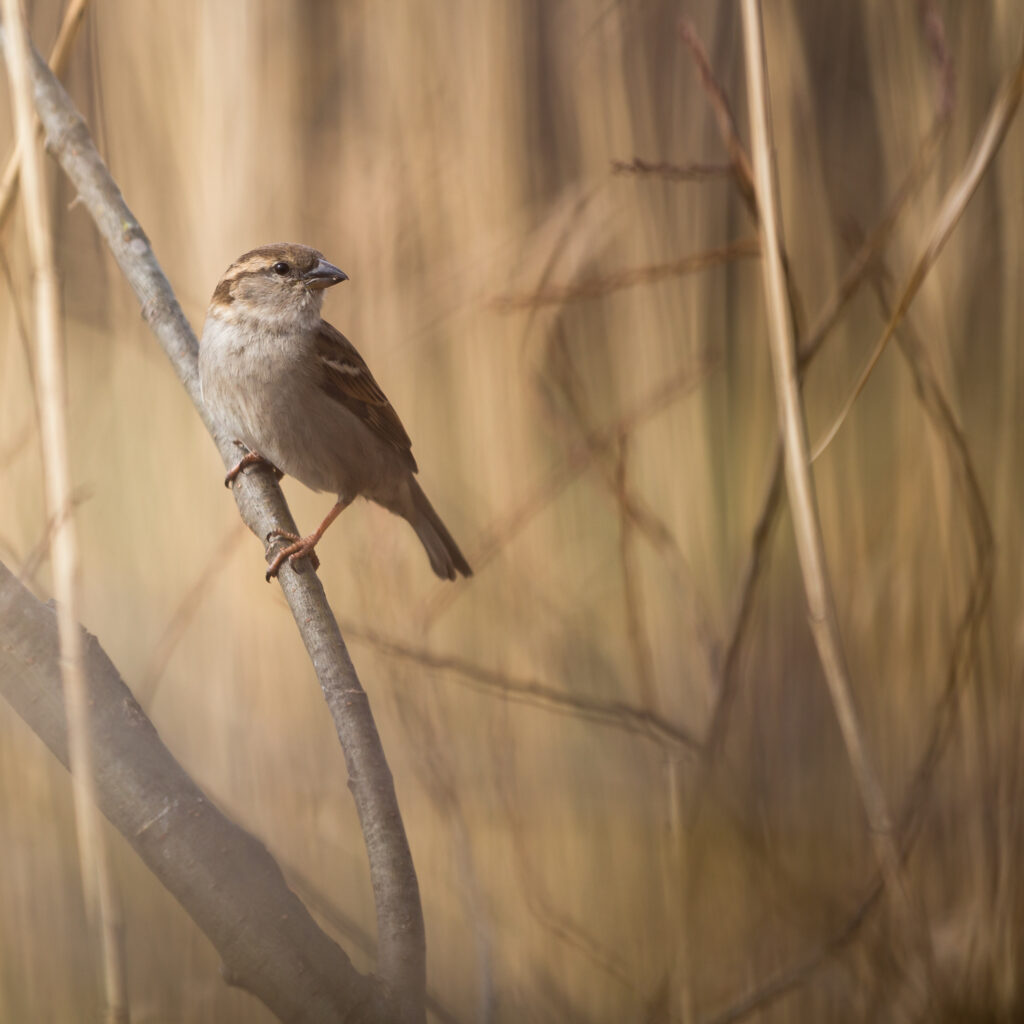
The House Sparrow (Passer domesticus) is a small bird, measuring around 5-6 inches in length from the tip of its bill to the end of its tail.
This bird typically weighs between 1-1.5 ounces, with males being slightly larger than females.
The wingspan of the House Sparrow ranges from 7-9 inches.
House Sparrow has a brown back and wings, with black and white streaks on its head and a grayish-brown belly.
Males have a black bib on their throat, while females have a buff-colored bib.
House Sparrows are found throughout the world and are commonly associated with human settlements, including cities, towns, and farmland.
Since they are non-native yet, they will visit your backyard even if you do not feed them.
The House Sparrow’s diet consists mainly of seeds and grains, but they also eat insects and other small invertebrates.
They are known to feed on spilled grain around farms, as well as birdseed from feeders.
Below are the characteristics of the House Sparrow,
| Scientific Name | Passer domesticus |
| Family Name | Passeridae |
| Length | 14-16 cm (5.5-6.3 in) |
| Weight | 24-39 g (0.85-1.4 oz) |
| Wingspan | 19-25 cm (7.5-9.8 in) |
| Habitat | Urban and suburban areas, farmland, and open woodland in Europe, Asia, and North America |
| Food | Seeds, grains, and insects |
24. American Goldfinch
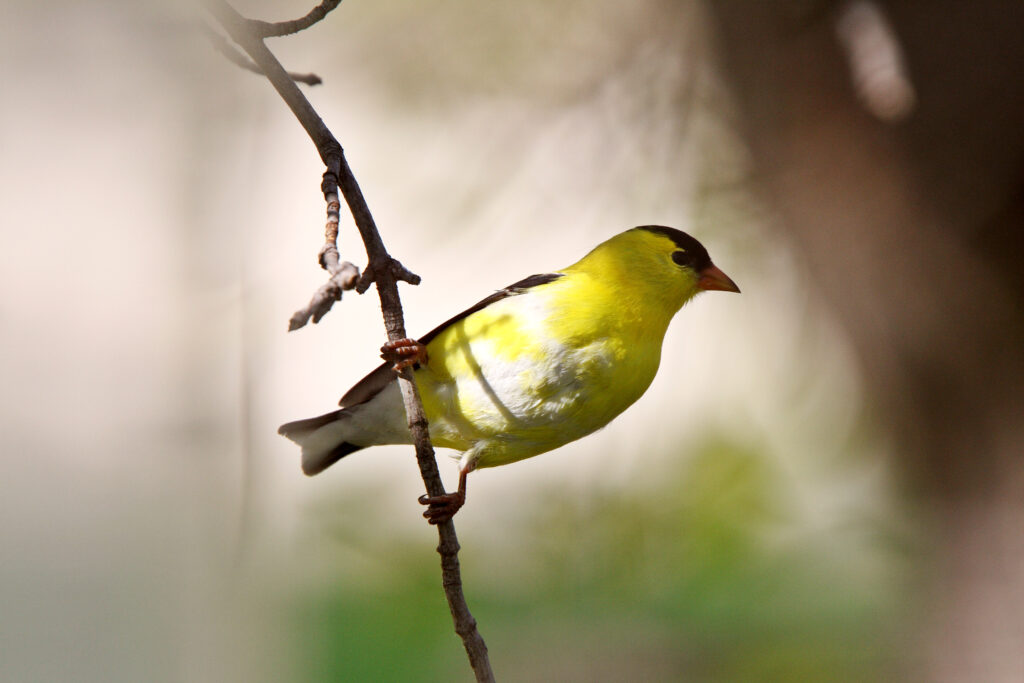
The American Goldfinch (Spinus tristis) is a small, brightly-colored songbird that measures around 4.5 to 5 inches in length from the tip of its bill to the end of its tail.
This bird typically weighs between 0.4-0.6 ounces, with males being slightly larger and more brightly colored than females.
The wingspan of the American Goldfinch ranges from 7-9 inches.
Before traveling to the southern states, American Goldfinches breed in the far northern states and Canada.
In the remainder of the United States, they are present all year.
They can be observed hunting on sunflower and aster plants in weedy fields and overgrown places.
They’re also prevalent in backyards and suburbia.
The American Goldfinch’s diet consists mainly of seeds from plants such as thistles, sunflowers, and other composite flowers.
They may also eat small insects during the breeding season to supplement their diet.
You should plant thistles and milkweed in your yard to attract more American Goldfinches.
Most bird feeders will attract them, and they like sunflower and nyjer seed.
Below are the characteristics of the American Goldfinch,
| Scientific Name | Spinus tristis |
| Family Name | Fringillidae |
| Length | 11-13 cm (4.3-5.1 in) |
| Weight | 11-20 g (0.39-0.71 oz) |
| Wingspan | 19-22 cm (7.5-8.7 in) |
| Habitat | Fields, meadows, and open woodlands in North America |
| Food | Seeds and insects |
Conclusion
In conclusion, Colorado is home to a diverse range of bird species that can be found throughout the state’s varied habitats, from the Rocky Mountains to the Great Plains.
From the majestic Bald Eagle to the colorful American Goldfinch, Colorado’s birdlife is both abundant and fascinating.
Whether you’re an experienced birder or a casual observer, there’s always something new to discover about these remarkable creatures.
By learning more about the most common birds in Colorado, we can deepen our appreciation for the natural world and work to protect these species and their habitats for future generations to enjoy.
FAQ
What is the state bird of Colorado?
The state bird of Colorado is the Lark Bunting, which is known for its distinctive black and white plumage and its beautiful song.
What types of birds can be seen in Colorado during the winter?
During the winter months, Colorado is home to a variety of birds including the Bald Eagle, American Goldfinch, Northern Flicker, and various species of sparrows.
What types of birds can be seen in Colorado during the summer?
During the summer months, Colorado is home to a variety of birds including the Broad-tailed Hummingbird, Mountain Bluebird, Western Meadowlark, and various species of warblers.
Are there any endangered bird species in Colorado?
Yes, there are several bird species in Colorado that are considered endangered or threatened, including the Gunnison Sage-Grouse, Greater Sage-Grouse, and Mexican Spotted Owl.
What is the best time of year for birdwatching in Colorado?
The best time of year for birdwatching in Colorado depends on the specific species you are interested in observing. Spring and summer are generally the best times to see migratory songbirds, while winter is a good time to see raptors and other winter visitors
What habitats can be found in Colorado that is good for birdwatching?
Colorado is home to a variety of habitats that are great for birdwatching, including alpine tundra, montane forests, grasslands, and riparian areas. Each of these habitats is home to a unique set of bird species that can be observed and appreciated by birdwatchers of all skill levels.
Last Updated on March 22, 2023 by Lily Aldrin

This pretty bird was seen in Longmont.
Black body, yellow head, black wings with touch of white,
Cannot seem to get pic on this, and you shouldn’t take candy pics from strangers.
Did not see it on pics of state birds, yet.